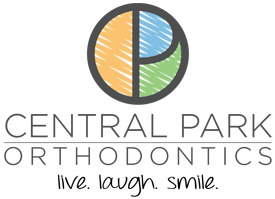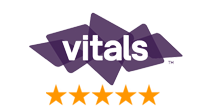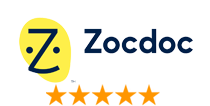Does your child need Phase I orthodontic treatment?
While many parents are prepared to take their children to the orthodontist in their teen years, not all parents realize that a much earlier visit to an orthodontist’s office can be very beneficial. Some children benefit from early treatment. Orthodontic treatment of a younger child is called “Phase I treatment.”
Not every child needs Phase I treatment. However, to ensure that those children who would benefit from early treatment have access to it, the American Association of Orthodontists recommends that all children be evaluated by an orthodontist around age 7. At this time, an orthodontist can determine whether the child has any orthodontic conditions that could be effectively treated.
What types of treatment are used in Phase I?
The exact treatments used for each child are individually selected by the orthodontist, based on the needs of that patient, and each treatment plan is different. Here are some of the orthodontic treatments that may be used for children.
To avoid the need for later extractions of permanent teeth, it is important to ensure that there is enough space in the jaw bones for all of the teeth. This is easiest to do during childhood, when the bones are still growing and changing shape, and your Upper West Side orthodontist can influence that growth.
A palatal expander, sometimes referred to colloquially as a “palate expander,” is a small device placed on the roof of the mouth. It puts gentle pressure on the two sides of the hard palate (the bony part of the roof of the mouth), to spread them apart from each other. New bone tissue will naturally fill in the space created between the two halves of the hard palate, so that this bone becomes wider. This creates more space in the upper jaw, allowing all of the teeth to fit without crowding.
Headgear and Reverse Headgear
These appliances are intended to correct situations in which the growth of the upper and lower jaws are not synchronized. When the upper jaw is too large, headgear is used to slow the growth of the upper jaw, allowing the lower jaw to catch up. When the upper jaw is too small, reverse headgear is used to encourage the growth of the upper jaw, so that it catches up with the lower jaw.
Whichever type is used, headgear consists of metal hooks that attach to braces, along with straps that anchor the device onto the head or neck. The device is worn for 12 to 14 hours per day for a period of several months. Wearing it solely while sleeping will usually not provide enough hours for it to be effective; however, headgear does not have to be worn at all times.
Limited Braces
While the placement of a full set of braces occurs after all of of the permanent teeth have erupted (around age 12), some children benefit from earlier braces on the permanent front teeth. These teeth erupt around age 6 or 7; an orthodontist may place braces on these teeth around age 8 or 9.
There are a few reasons for placing limited braces for children. If the front teeth jet forward (called an “overjet”), they are at risk for being damaged or broken during normal childhood play. Placing braces on these teeth can help to protect them by correcting this overjet. If the front teeth are very misaligned, children may feel self-conscious about their smiles, and their self-esteem may suffer during the crucial years of early adolescence. Placing braces earlier can give a child a beautiful smile, allowing him or her to navigate the social world more confidently. Additionally, aligning these teeth early may shorten the duration of the later phase of treatment, which is completed during adolescence.
Habit-Breaking Appliances
While childhood habits may seem harmless, if they continue past the age where the teeth begin to erupt, some habits can interfere with the growth of the jaw bones and the alignment of the teeth. Some common harmful habits include thumb sucking and tongue thrusting. In many cases, it can be difficult for parents to help children break these habits.
Orthodontists can place small appliances that help to discourage children from continuing with their harmful habits. For example, a small metal appliance placed behind the front teeth is highly effective at breaking the habit of thumb sucking.
The benefits of treating early
Not every child requires Phase I orthodontic treatment. However, for some children, early treatment can provide many benefits. Treating early may create enough space in the jaw for all of the teeth, avoiding the need for later extractions. It may have social benefits, giving the child a beautiful and confidence-promoting smile during the most self-conscious time in most people’s lives.
What should I do next?
If you have a child around age 7, then you should take your child to an orthodontist to determine whether or not early treatment would be beneficial in your child’s case. Please call our office 646.762.5400 or click HERE to access our convenient online contact form, to book your child’s appointment with Manhattan, NY, orthodontist, Dr. Pliakas.
This information is not meant as medical advice. It is provided solely for education. Our orthodontics office on the Upper West Side would be pleased to discuss your unique circumstances and needs as they relate to these topics.
Meet Central Park Orthodontics In Manhattan, NY
Specializing In Early Orthodontic Treatments
Manhattan, NY, orthodontist, Dr. Pliakas, takes great pride in providing you with the best orthodontic treatment options by having the most advanced technology available, including retainers after treatment. With Central Park Orthodontics you can enjoy treatment times up to 50% faster than with traditional metal braces. We provide so many options from Invisalign to Orthopedics to Propel to Acceledent. During a 100% no-obligation Smile Assessment, we will assess your or your child’s unique mouth.
Central Park Orthodontics in Manhattan, NY, understands the importance of making braces affordable. That is why we offer affordable payment plans for braces, interest-free!
When you are ready, click here to schedule your appointment which includes a comprehensive exam, a personalized consultation, and more. Call today!
Central Park Orthodontics
271A Central Park West
(entrance on W.87th St.)
New York, NY 10024
Phone: 646.762.5400


















